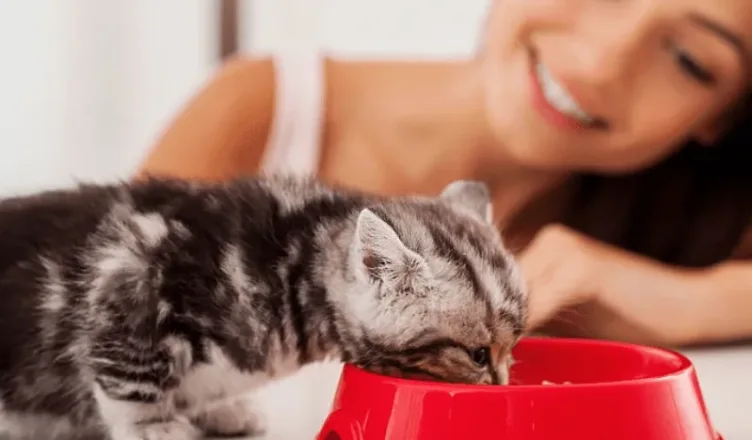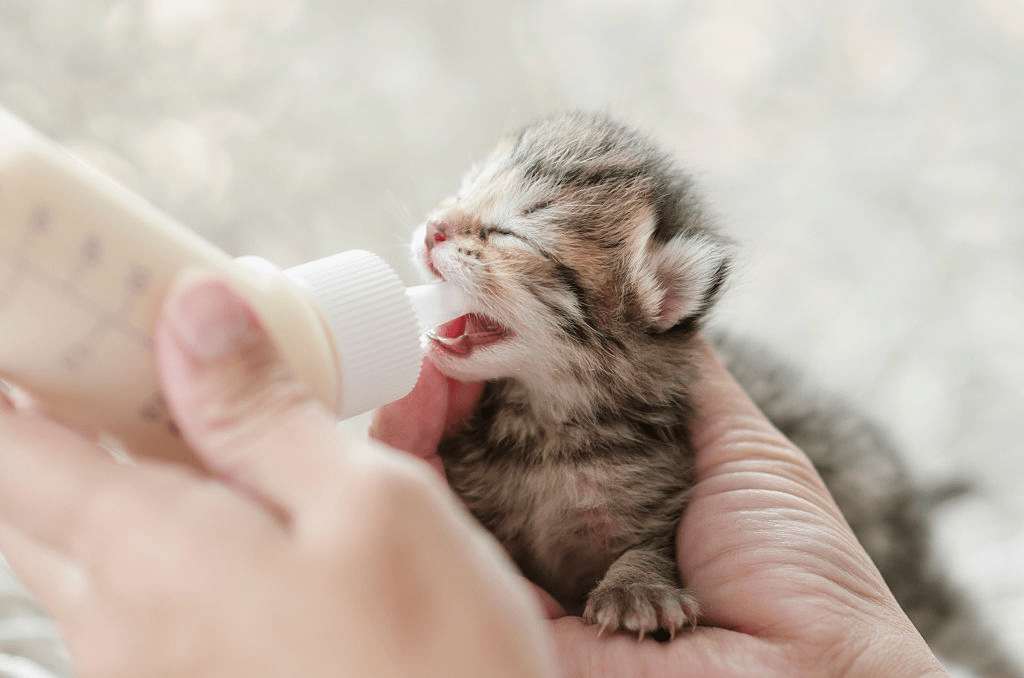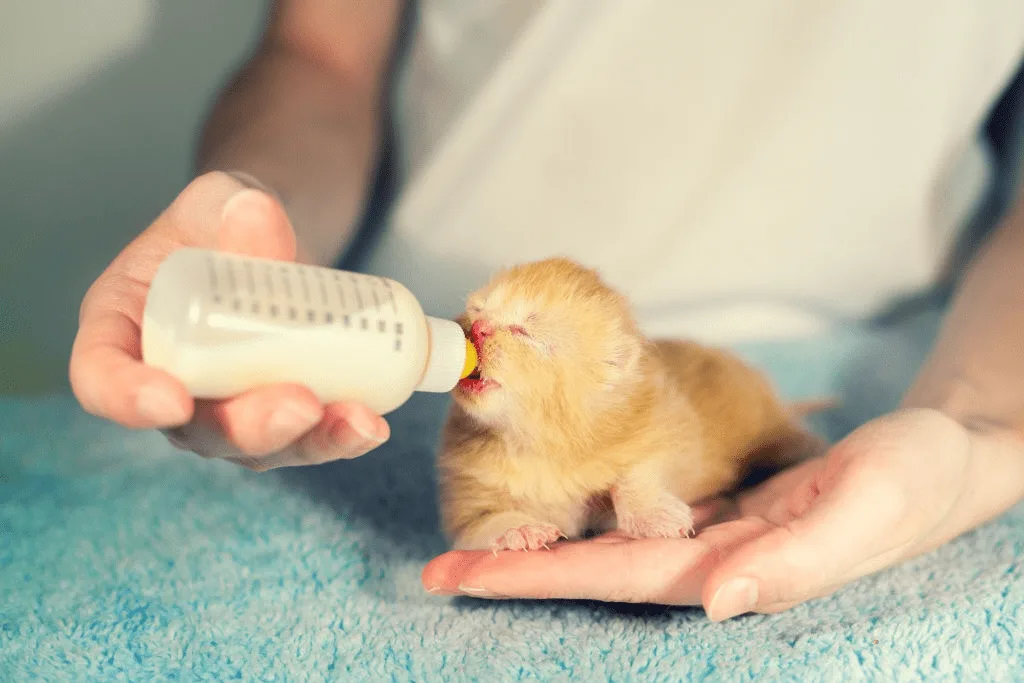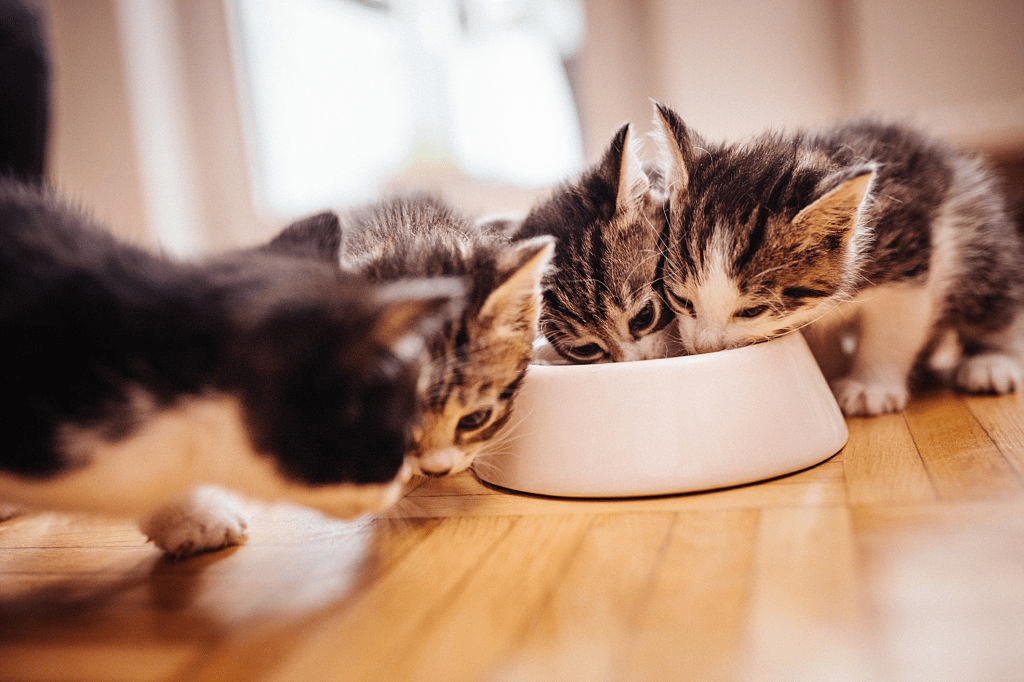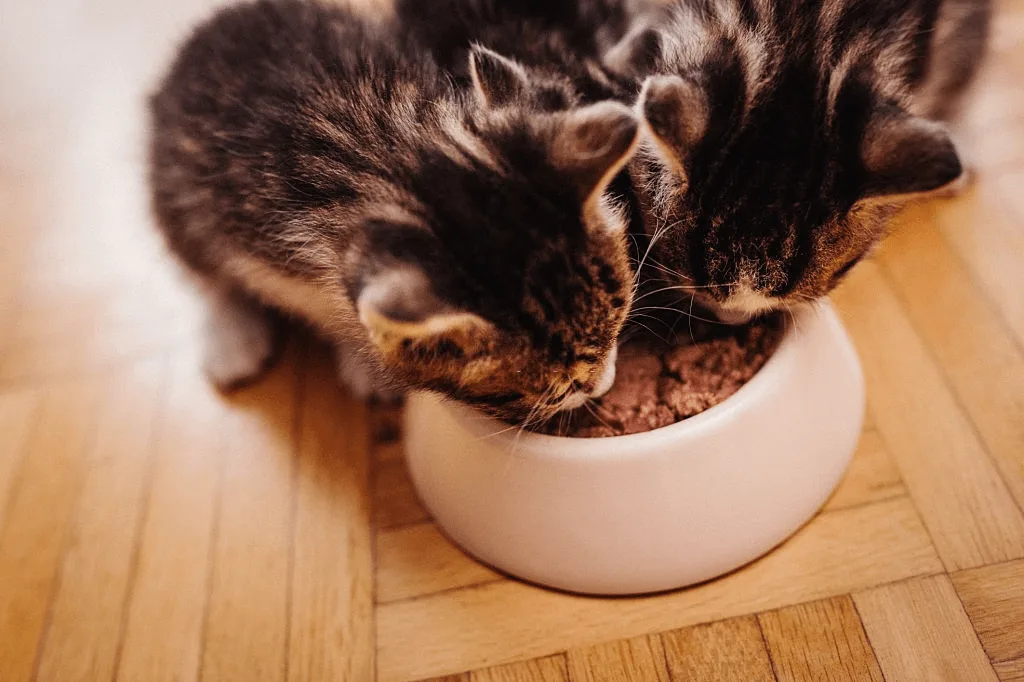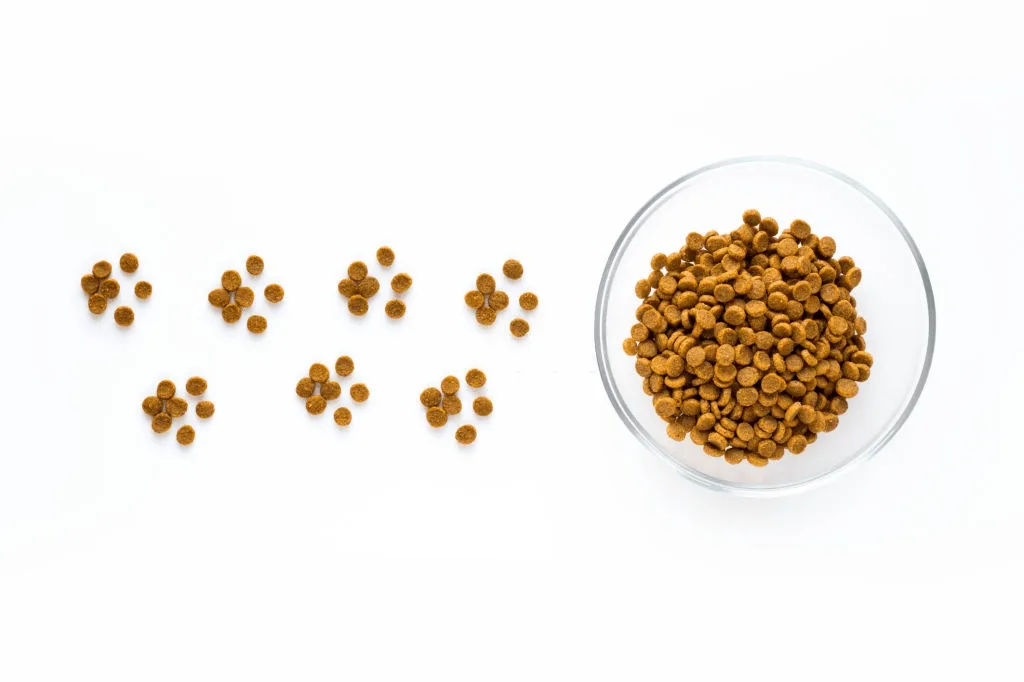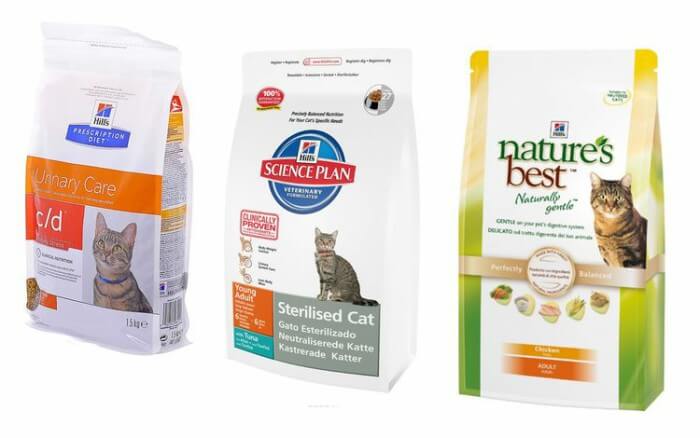With the advent of the little fluffy house, many owners are thinking about how to feed kittens properly so that it can grow and develop as harmoniously as possible.
If you can deal with the training in the tray, games or even training by trial and error, you should have a more thorough approach to the principles of nutrition. Improper eating habits can lead to negative chronic diseases and significantly ruin a pet’s life. Small purrs still have a fragile organism, which is not able to digest most of the products on your table. That is why it is so important to choose a special diet, taking into account the peculiarities of the development of babies.
Today you will learn how and how to feed the kitten properly, what time intervals between feedings should be at one or another age, and what kind of food is strictly forbidden to feed little fluffies.
In the article, we also compiled a rating of the most popular and high-quality feeds for kittens, the composition of which is as balanced as possible and adapted to the body of the pet.
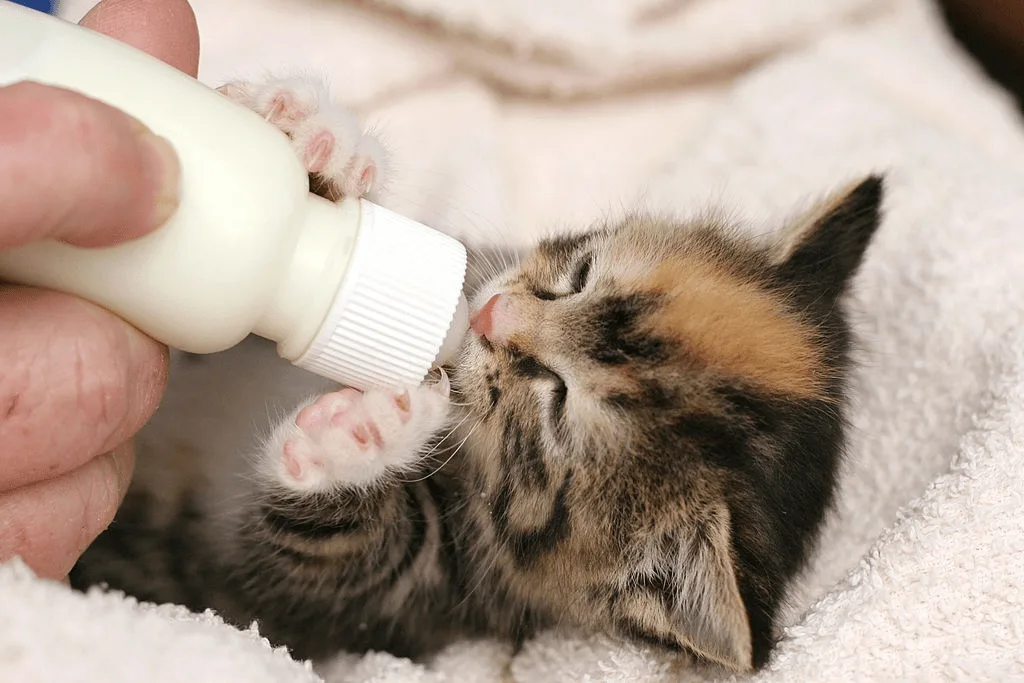
Useful and forbidden foods for the smallest kittens
So, you brought a little kitten and are trying to figure out what to feed it with. In fact, there are two options for creating a diet: prepared food (which we will talk about a little later) and natural food. The second principle of nutrition refers to foods that you eat yourself.
Of course, far from all food that is beneficial to humans is harmless to a cat. Among the permitted products for small fluffies (up to 3-4 months) are:
- Baby food. In any supermarket, you can find small jars that are designed to feed a baby. Most of them are fruit or vegetable based, but you can also find mashed meat. Make sure to use lean meats (lamb and pork under a strict ban in kittens) when creating food – it’s better to stop with mashed chicken, turkey or rabbit.
- Cottage cheese with a low percentage of fat, low-fat sour cream.
- Boiled lean meat, minced in a blender or meat grinder. For older kittens (from 4 months), you can simply cut the meat into small pieces. This will help form a chewing reflex.
- Chicken bouillon.
- A boiled egg (especially the yolk), chopped with a blender or fork. For a more mashed state, you can add a little milk or low-fat sour cream to the chopped yolk.
- Milk porridge cooked in milk.
These products are ideal for becoming the first lure for a small kitten. Keep in mind that it is also important to know the list of prohibited foods that can be harmful to your purses. The list of hazardous products includes:
- Potato: both raw and boiled;
- Tomatoes: (especially in raw form) – contain toxins that the fluffy organism cannot digest;
- Garlic and onions: (yellow, red, leek) – even though these products are of great benefit to our body, small kittens (however, like big cats) are categorically contraindicated, onions can cause anaemia and lead to serious consequences;
- Fruit
- Boiled rice negatively affects the functioning of the gastrointestinal tract;
- Citrus fruits (however, kittens are so afraid of the smell of citrus fruits that they themselves will not eat lemons or oranges);
- Grapes.
When composing a diet for a little fluffy, pay attention to the individual reaction of the animal. It often happens that the products that are recommended for use, the kitten simply does not like and refuses to eat. This is important to consider, especially if you want to choose the most balanced diet. Listen to the request of the animal to make a menu of products that he will gladly eat on both cheeks.
If you notice a frequent lack of appetite and a bad reaction to seemingly normal food, it is advisable to show the kitten to a veterinarian.
Feeding a little kitten in the first months of life
The diet of a pet differs primarily depending on how many months or years it is. This is especially true for small kittens, whose body grows at a rapid pace. Considering all our recommendations, you can choose the most balanced diet for the animal, which will take into account the features of the development of purrs.
How to feed kittens up to 1 month?
The smallest newborn kittens primarily need mother’s milk. It contains all the necessary components for growth and development, as well as hormones responsible for the development of animal immunity. In some situations, it may happen that a small kitten is left without a mom cat. Then a man can take on the nutrition of pussies. Fortunately, you can make a kitten survive separation from his mother at such an early age with minimal loss. How to feed babies aged 1-3 weeks?
- Nurse cat. Ask friends or give an announcement if there is a cat nearby that has recently given birth. She can feed kittens, thus replacing her mother. Today, finding a nurse is quite simple. Bulletin boards or social networks help you find the answer to any request. You can even try contacting a pet store or veterinarian. Veterinarians can contact the owners of a recently born cat and ask them to help the babies.
- If the nurse was never found, you can use a special mixture that replaces the kittens with the mother’s milk. You can buy it at any pet store or at a veterinary station.
- In the most extreme case, you can resort to the following recipe. Take good milk and boil it. After it has cooled slightly, mix it with raw egg white. The ratio of milk and protein should be 4: 1. Stir all the ingredients until smooth, and you can start feeding the puss.
- Mixtures for babies, which are sold at any pharmacy or supermarket, are also suitable for feeding small kittens. However, it is advisable to dilute them with boiled water or milk.
How to feed kittens in 1 month?
From the age of 3-4 weeks, pussies are still considered small, so their diet should be approached with great care. After a month of life, kittens can gradually begin to introduce so-called complementary foods. Even if there is a cat at the age of one month, the kittens independently move away from the mother’s milk and begin to try other foods.
Keep in mind that furry food interest is the strongest at this age. Therefore, protect it from harmful products that can harm the baby’s health. The teeth, jaws and stomach purr are still not formed in order to try adult food. So lure is best to start with food, which in its consistency resembles cat’s milk.
It is during this period that you can try to give vegetable or meat baby purees that have a balanced composition, grated cottage cheese or cereal.
Rules for feeding a kitten in 2 months
From this point on, you can gradually begin to add more solid foods to the furry diet. Gradually move away from the grinded products so that the kitten has the opportunity to form a chewing reflex properly.
During this period, cats develop bones and muscles, especially, so low-fat meat and cottage cheese will fit perfectly in the fluffy menu. To replenish the necessary supply of vitamins, add boiled or steamed pumpkin and carrots to the animal’s diet.
Make sure that the puffy does not overeat. Two-month-old kittens are not yet so experienced and can not determine when they are full. Therefore, try to feed the fluffies as metered as possible, observing certain intervals (which we will talk about a little later).
From two months of age, special feeds for kittens become relevant. Choose high-quality products so as not to harm the health of the puss, but rather provide it with all the necessary vitamins and minerals for the normal development of the body.
How to feed a kitten in 3 months?
At 2-3 months, kittens begin to form teeth. That is why it is so important to include more solid foods in your pet’s diet. It is at this age that experts recommend adding a little raw meat to the puffer menu. Please note that some types of meat may be infected with worms. Therefore, be sure to take all necessary steps to prevent helminths in the animal.
In addition to meat products, a kitten’s diet may include:
- raw vegetables grated on a coarse grater or cut into small pieces;
- low-fat fish (make sure that there are no seeds);
- porridge in milk;
- low-fat cottage cheese and sour cream;
- natural yoghurt.
How to feed a kitten after six months?
At the age of 5-6 months, the kitten’s body is already fully formed. Therefore, it is time to switch to a standard adult and look. By this age, eating habits are finally developing, so you can create a menu based on the wishes of your pet.
How to feed a little kitten basic recommendations.
To create the most balanced healthy diet, we suggest that you familiarise yourself with the advice of leading veterinarians and felinologists:
- Make sure that all products that fall into the kitten’s plate are as fresh as possible.
- Stop smoking smoked foods, sausages, and spices. Of course, the animal may like these products, but the health of the kitten is more important. Sausage and smoked dishes negatively affect the functioning of the gastrointestinal tract and the general health of the pet.
- The temperature of the food should be room temperature. In no case should you overheat or cool dishes.
- Make sure that the animal is drinking enough fluids. It should be pure drinking water (from the tap). Change the water in the bowl daily and rinse the bowl.
- Strongly large pieces of food must be cut even if the kitten is more than 5 months old. It is difficult for the animal to chew large pieces of food.
Following all the rules, you, your kitten will be full and absolutely happy.
Natural food for a kitten
We have already said above that there are two basic principles of feeding small pets: prepared feed and natural food. Now we will talk about the second option. It may seem that feeding with natural products is a rather complicated and time-consuming process. Moreover, constant cooking attracts few people. And over time, animals can form their preferences, which will not necessarily coincide with the recommended norms.
However, there are no difficulties in this type of feeding. The main thing is to follow the basic rules and include only products that are useful to the cat. Fortunately, there are quite a few of them. If you have already decided to feed the little fluffy natural food, it is important to form the grocery basket correctly. Going to the store, buy the following products for the kitten:
- Meat: Meat products are the basis of the daily diet of both an adult and a small cat. Most suitable for the growth and development of the animal is beef, rabbit and fish (marine low-fat). Feed the kitten with fish no more than 1-2 times a week.
- Poultry: exception is the fatty part of the chicken.
- Dairy: Useful for developing kitten bones. Keep in mind that not all pussies can digest ordinary cow’s milk. Therefore, it is recommended to replace low-fat cottage cheese. Mix a small amount of cottage cheese with raw yolk or milk. We assure you that this will become one of the most beloved delicacies of the little purrs. You can also give the kitten a small number of dairy products (kefir, yoghurt) or low-fat sour cream.
- Cellulose: This component is especially rich in some vegetables and cereals. At a young age, porridge is recommended to be boiled in cow’s milk, while for kittens older than 3 months old, porridge can be boiled in chicken or beef broth.
Special food for kittens
If you don’t have time to cook for a kitten or if you want to make the animal’s diet as balanced as possible (the ideal ratio of BJU, vitamins and minerals), choose high-quality feed for small kittens. They are as convenient as possible for those furry owners who spend quite a lot of time at work.
The feed from popular manufacturers includes all the ingredients necessary for the growth and development of an animal. Most world famous brands today produce special products for little fluffies.
To begin with, it should be noted which categories of feed today stand out on the market.
- Economy class: The cheapest product, which is far from having the best composition and is unlikely to benefit a small kitten. It attracts more with its value. So, if you do not care how healthy the fluffy grows, it is better not to even look in the direction of economy-class feed.
- Premium class: More expensive feeds that are ideal for cats. However, with small animals, it is better not to resort to this type of food on an ongoing basis. Of course, it contains all the necessary vitamins and minerals, and also has a balanced composition. However, often among the ingredients, you can find flavour enhancers, flavours and colourants.
- Super premium: Ideal food for kittens. Such products contain all the necessary ingredients. It contains no allergens and various chemical additives.
- Holistic:The most expensive feed, which has the most natural composition.
Before proceeding with the choice of food for kittens, it is important to understand at what age you can give babies finished products. In fact, the recommended age of the puffer is often indicated on the package (most importantly, not earlier than 3 months). Initially, it is recommended to give liquid food or canned food – the cat’s immature teeth will perfectly cope with such food. While after 3-4 months, when the kitten’s teeth have become much stronger, try to gradually introduce dry food.
We highlighted the top 3 brands of feed for small kittens. Take a look at these brands to choose a truly high-quality food for a furry friend.
BLUE Wilderness
A popular cat food maker offers wet food for small purrs. Products belong to the category of super-premium class. The composition contains exclusively natural ingredients. An important advantage of the feed is its high protein content.
By the way, protein should be the basis of the cat’s diet at any age.
In addition to a balanced composition, this food has a vitamin-mineral complex that saturates the animal’s body with all the necessary trace elements. Among the other advantages of the product can be identified:
- high quality of each ingredient;
- lack of additives (flavourings, flavour enhancers, colourants);
- relatively low cost;
- wide range of;
- availability (you can purchase food at any pet store).
Among the disadvantages of the products, one can single out the presence of ingredients (for example, maize) that can cause a kitten to have an allergy.
Hills
Unlike the previous feed, this product belongs to the premium class. However, do not rush to conclusions – her composition is pretty good, although it has minor flaws.
However, let’s first talk about the benefits of Hills feed:
- the presence of a vitamin-mineral complex in accordance with the age of the animal;
- wide assortment (the feed line includes a large number of flavours);
- You can find Hills food in many pet stores and even supermarkets;
- affordable cost.
The disadvantages of this product, for the most part, are its composition:
- the presence of ingredients that cause an allergic reaction in a small kitten;
- despite the high concentration of protein, most of it is of plant origin, which is not very useful for babies;
- a high concentration of carbohydrates;
- most of the food is liquid (which for kittens that do not consume much water can even be a plus).
Proplan (Junior Series)
One of the most popular manufacturers of cat food, which produces special food for little fluffies. Today you can buy such food in a vet pharmacy or pet stores, as well as in a regular supermarket. Products have a huge number of advantages:
- wide range of tastes;
- the high protein content of animal origin;
- vitamin and mineral complex;
- the presence of prebiotics in the composition;
- a balanced composition that fully meets the needs of the body of a small kitten.
Among the shortcomings of the products, one can single out the presence of artificial preservatives and corn, which is an allergen for animals.
List of prohibited products for small kittens.
One of the most common stereotypes says that a little kitten will joyfully gobble up sausages and lap up cow’s milk. In fact, the preparation of the menu for the fluffy lump should be approached much more carefully and accurately. Having studied the products that can be given to a kitten at this age, it is also important to list the prohibited foods that may mistakenly appear in the diet of purses.
Above, we mentioned some foods that a kitten’s body may not digest. And some of them can even cause serious illnesses. However, in addition to the food already mentioned, it is also important to list foods that are not poison, but with constant use can cause some problems with the animal’s health. These include:
- Liver: In small portions, sometimes it can even be useful. The liver saturates the kitten’s body with vitamins of groups A and D. However, if the animal’s liver is given on a regular basis, hypervitaminosis can occur, which will lead to many diseases.
- Legumes Provoke an unpleasant sensation in the stomach of the kitten, can cause bloating or constipation.
- Potato: Starch, which is the basis of potatoes, is practically not absorbed by the body of kittens and leads to gastrointestinal diseases.
- Feed economy class. If there is no choice, you can periodically feed the kitten with economy feed. However, on an ongoing basis, such products simply destroy the animal’s health.
- River fish: If sea fish can still be given 1-2 times a week, then with river fish it should be especially careful.
What foods can be especially dangerous for small kittens? This is a relatively small list that consists of two products. They should be strictly avoided when feeding the puffer at the age of 1 to 4 months:
- Smoked products: This also includes any dish containing salt and other spices. Too greasy and spicy food destroys the stomach of the fluffy lump, can lead to inflammation and severe poisoning.
- Raw meat: For adult cats, it may even be something useful. However, small kittens cannot yet digest such foods. So, acquiring lean meat, boil it or steam it. In its raw form, it can not only cause stomach disease but also cause infection of the baby with worms.
Please note that for some breeds there is a separate list of prohibited products. So, if your little fluffy has his own pedigree, study what products he can and what not. Some foods can cause allergies or cause other more serious illnesses. For example, the owner of large noble Maine Coons should exclude both river and sea fish from the diet. It harms the work of the digestive tract of the pet.
Feeding a kitten – adhere to the regime
The number of meals a cat has (depending on his age, however).
- A small kitten (up to 3 weeks) must be fed 9-10 times throughout the day. Please note that at this age night feeding should also be present (at least 3 times).
- From 3 weeks to 1 month, you can slowly remove one feeding and leave 8 meals a day.
- Clean up another 1-2 meals before 2 months.
- Fluffy three-month-old kittens are recommended to be fed about 6 times a day.
- Up to 5 months, animals should be fed 5 times a day. At this time, it is already possible to completely remove night feedings and distribute food evenly throughout the active day.
- After six months, kittens, as a rule, eat about 4 times a day.
- Up to a year, they are already switching to a rarer diet: breakfast, lunch and dinner. Like humans, it is important for cats to build the correct regimen. It is advisable to feed them daily at the same time. For example, breakfast can be made at 8 o’clock in the morning, lunch can be moved at 3 o’clock in the afternoon, and dinner can be moved at 7-8 o’clock in the evening.
How much food should kittens be given?
Not only the number of meals but also the weight of one serving will depend on the age of the puss. For the most part, it is calculated based on the weight of the puss. On average, 250 grams of food is consumed per 1 kg of pet.
That is, if your fluffy weighs about one and a half kilograms, he needs 370-400 grams of food per day. After you find out how much food a kitten needs, it is also important to calculate the percentage of meat, dairy products, vegetables, and cereal. This is the only way to choose the most balanced diet. Over time, pussies will develop dietary habits. What food they will love, but some categorically shun. Keep in mind that in some cases this may signal a lack of a certain group of vitamins and minerals in the body of pussies.
Remember that a little kitten is just starting to know the world. Therefore, each product seems to him a new and important stage. Therefore, it is important to properly form the nutritional behaviour of the animal. A well-fed and healthy purr will certainly thank you for your care and become your best friend and member of your family.
